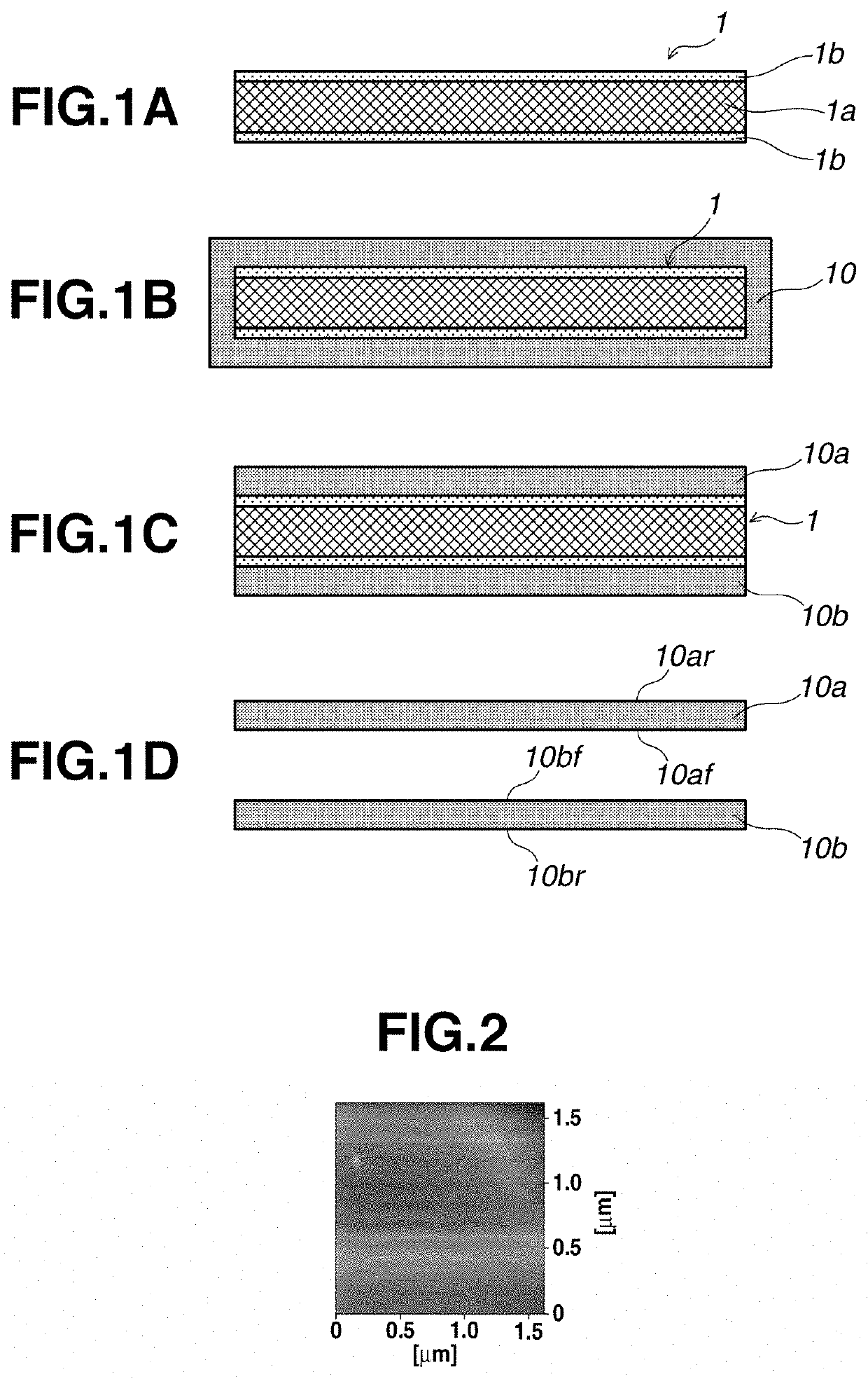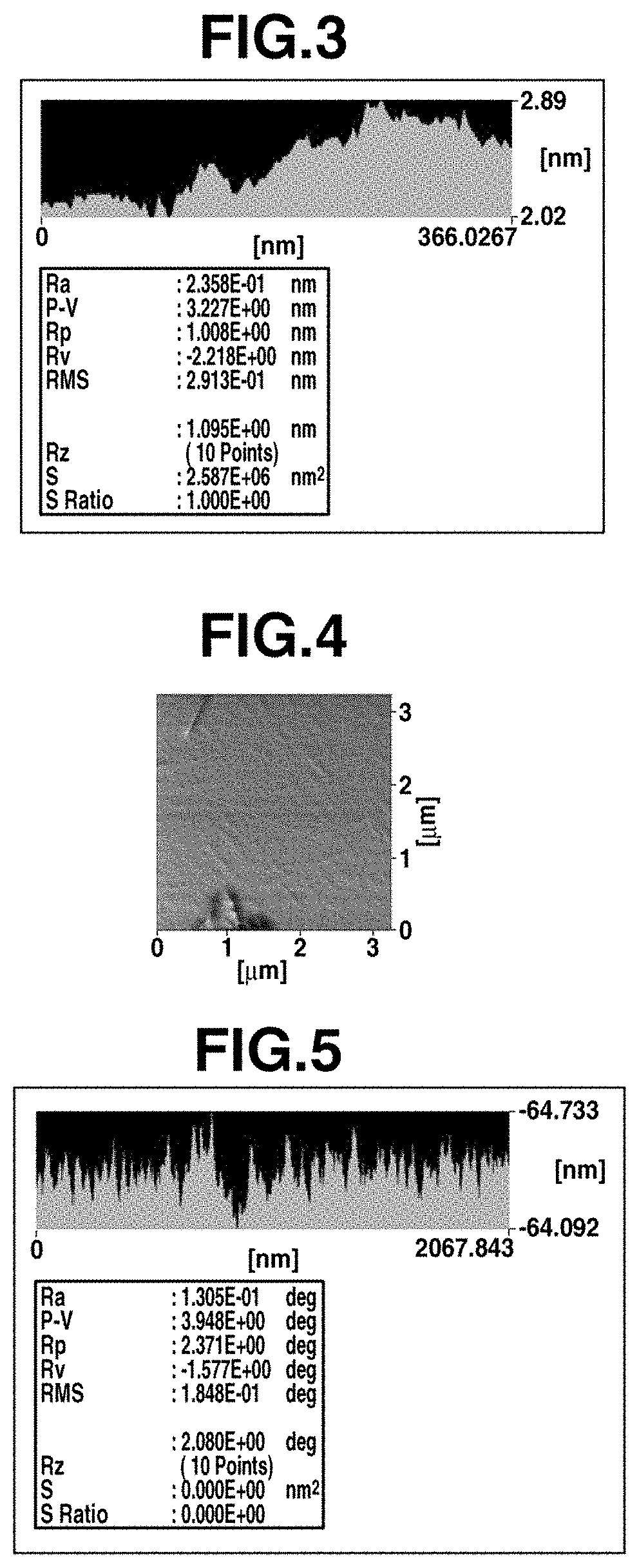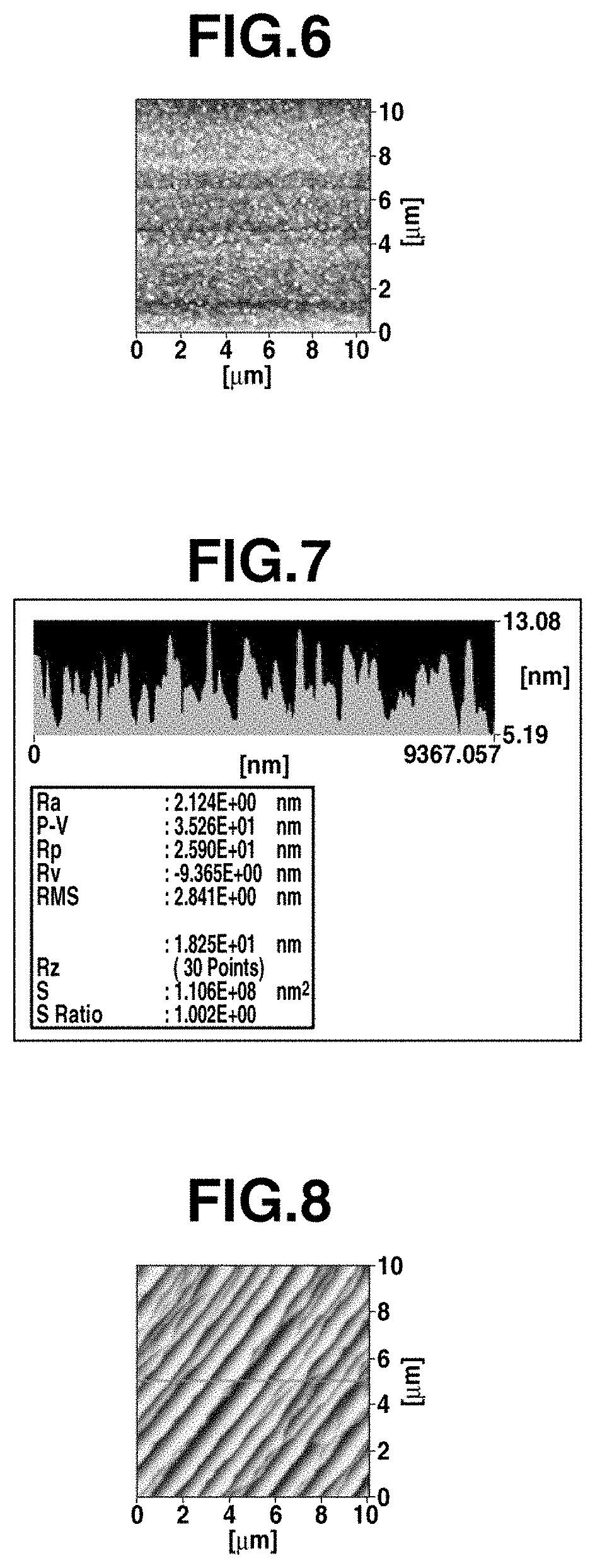Silicon carbide substrate production method and silicon carbide substrate
a silicon carbide substrate and production method technology, applied in the direction of superimposed coating process, crystal growth process, after-treatment details, etc., can solve the problems of high production cost of single crystal silicon carbide substrate, deformation of substrate, and limited application
- Summary
- Abstract
- Description
- Claims
- Application Information
AI Technical Summary
Benefits of technology
Problems solved by technology
Method used
Image
Examples
example 1
[0119]A silicon carbide substrate was prepared by the procedure shown FIG. 1.
[0120]First, as a base substrate 1a, a single crystal silicon substrate having a diameter of 3 inches, a thickness of 400 μm, and a surface of (100) plane was used. Both surfaces of the silicon substrate were polished, and the arithmetic mean roughness Ra of the substrate surface was 0.1 nm.
[0121]Next, the silicon substrate was subjected to a wet oxidation treatment at 1,100° C., and thermal oxide films each having a thickness of 0.5 μm were formed as covering layers 1b and 1b on the front and back surfaces of the substrate to prepare a support substrate 1. In this case, the surfaces of the covering layers 1b and 1b (thermal oxide films) reflect the smooth surfaces of the base substrate 1a (silicon substrate), and the arithmetic mean roughness Ra of the surface of the support substrate 1 was 0.3 nm or less.
[0122]Next, the silicon carbide film was formed on the support substrate 1 by using a thermal CVD meth...
example 2
[0131]A silicon carbide substrate was prepared by the procedure shown FIG. 1.
[0132]First, as a base substrate 1a, a high-purity carbon substrate having a diameter of 3 inches and a thickness of 400 μm was used. The arithmetic mean roughness Ra of the surface of the carbon substrate was 2.3 nm.
[0133]Next, boro-phospho silicate glass (BPSG) films each having a thickness of 1 μm were deposited on the front and back surfaces of the carbon substrate as covering layers 1b and 1b by a CVD method. Subsequently, by heating to 900° C. in an argon gas atmosphere, the covering layers 1b and 1b were reflowed to obtain a support substrate 1 with smoothed surfaces. The arithmetic mean roughness Ra of the surface of this support substrate 1 was 0.2 nm.
[0134]Next, a silicon carbide film having a thickness of 300 μm was formed on the support substrate 1 under the same conditions as in Example 1 by using a thermal CVD method.
[0135]Subsequently, the silicon carbide film deposited to the end parts of th...
PUM
| Property | Measurement | Unit |
|---|---|---|
| roughness | aaaaa | aaaaa |
| crystal grain size | aaaaa | aaaaa |
| crystal grain size | aaaaa | aaaaa |
Abstract
Description
Claims
Application Information
 Login to View More
Login to View More - R&D
- Intellectual Property
- Life Sciences
- Materials
- Tech Scout
- Unparalleled Data Quality
- Higher Quality Content
- 60% Fewer Hallucinations
Browse by: Latest US Patents, China's latest patents, Technical Efficacy Thesaurus, Application Domain, Technology Topic, Popular Technical Reports.
© 2025 PatSnap. All rights reserved.Legal|Privacy policy|Modern Slavery Act Transparency Statement|Sitemap|About US| Contact US: help@patsnap.com



